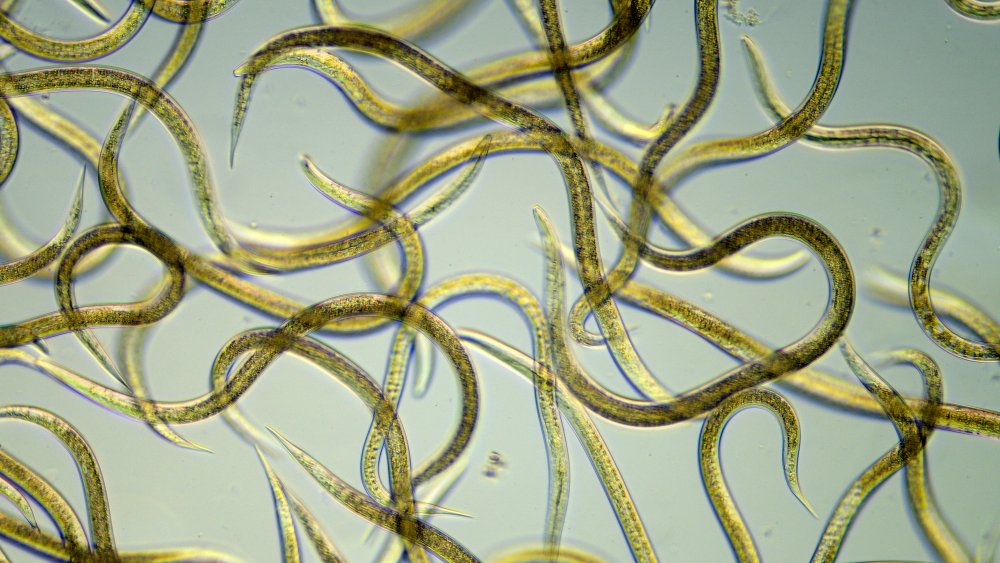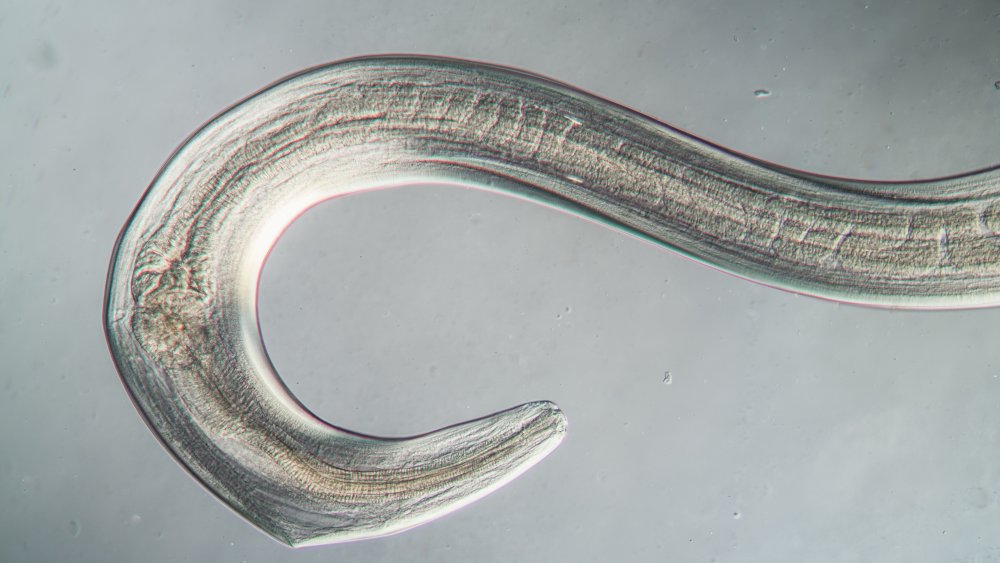The Truth About The Oldest Living Organisms On Earth
You're only human and humans aren't very good at living more than a century. Other animals presently inhabiting the planet don't fare much better. There are exceptions. For instance, according to National Geographic, the oldest living tortoise, whose name is Jonathan, is over 180 years old, and even that is unimaginable to us as a species, with our average lifespan in the low 70s. There's a species of sponge that lived to be over 11,000 years old, which makes our minds melt a little to think about.
There other spectacular creatures with excessively long lifespans, such as the "immortal" jellyfish that can revert to its larva stage and begin life all over again any time it's faced with a threat. While this preserves the jellyfish's DNA for long swaths of time, it still has nothing on the oldest creature alive — a creature that's thought to have been alive for over 40,000 years. And we have Siberia to thank for it.
Ancient living creatures discovered in the ice
In 2017, the Siberian ice gave way to what some scientists believe to be a monumental discovery. Roundworms were found frozen in a sample of the ancient frozen water, but that was to be expected. Roundworms, also known as "nematodes," are among the planet's oldest forms of life. According to Oregon State University, the oldest roundworm samples discovered were roughly 400 million years old, but the creatures are believed to have been around for a billion years. Of course, all evidence of ancient roundworms so far has been encased in stone, literally. Until 2017, that is.
When the Siberian ice sample containing what scientists understandably believed to be dead, frozen nematodes, two of the roundworms decided they weren't quite as dead as previously believed. Out of around 300 nematodes from the Siberian ice samples studied, according to The Siberian Times, two of the thawed subjects came viably back to life. In a humble petri dish at The Institute of Physico-Chemical and Biological Problems of Soil Science in Moscow, two prehistoric creatures began to move and eat. Both are believed to be female. One is thought to be around 32,000 years old, while the other is pushing 42,000 years old, making them the oldest known living organisms on Earth.
What does that mean for science?
Beside the fact that's pretty freakin' cool that any creature can survive being frozen in ice for 30,000-40,000 years, the discovery could provide a serious stepping stone in a couple different fields of study. For starters, any organism that has only previously been studied in fossil records but is later discovered with intact DNA can provide invaluable clues to evolution on Earth, and these particular creature date into the Pleistocene — commonly called the "ice age." We could learn things about the biological family tree that may have never been discovered otherwise. But there's a second major area where these tiny round worms could help out: cryogenics.
"It is obvious that this ability suggests that the Pleistocene nematodes have some adaptive mechanisms that may be of scientific and practical importance for the related fields of science, such as cryomedicine, cryobiology, and astrobiology," the research scientists told The Siberian Times.
It's possible that this adaptive mechanism, whatever it may be, could lead to some crazy future tech if we find a way to adapt it to humans. From the more sci-fi idea of keeping terminal humans frozen until a cure for their ailments can be discovered centuries later, to allowing for prolonged surgery times, to things as mundane as keeping your meat from getting freezerburned. That is, of course, if the nematodes are actually as old as it's claimed they are.
It may have been caused by a contaminated sample
Though the signs of life in these organisms can't really be disputed — they ate and even procreated — not everyone is convinced that the nematodes are the real deal. A nemotologist (yes, it's a real job) from the University of Florida, Robin M. Giblin-Davis, is among the skeptics.
"Theoretically, it is possible that if the organisms are protected from physical damage that would compromise their structural integrity during their frozen internment, they should be able to revive upon thawing/rehydration for very long periods of time," Giblin-Davis told Gizmodo in support of the discovery's possibility. But "possible" doesn't mean "true."
"The biggest issue is the potential for contamination of 'ancient samples' with 'contemporary' organisms," the nemotologist (still a real job) explains.
Even the scientists studying the creatures admitted in their paper that there was a chance that the samples could have been contaminated by a more recent nematode species, but believe it's implausible, since the samples taken ranged from 15-100 feet into the ice — too far for the roundworms to have realistically maneuvered through the frozen soil and ice. Other nematode species have been found in the ice of Antarctica, but scientist have found it difficult to carbon date the samples, making some within the scientific community look at the Siberian nematodes with a more critical eye. If these creatures do turn out to be as old as expected, this could be a monumental discovery.



